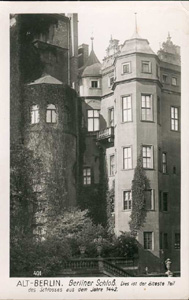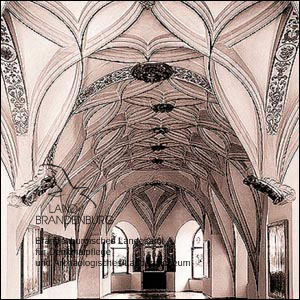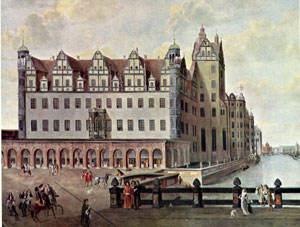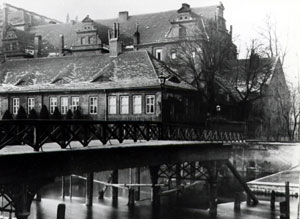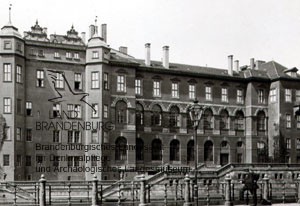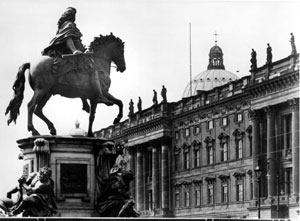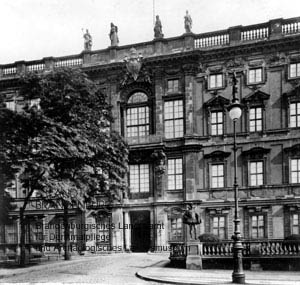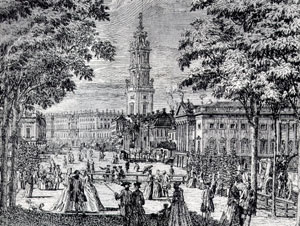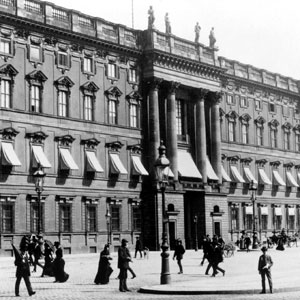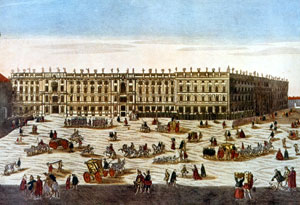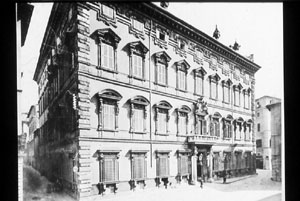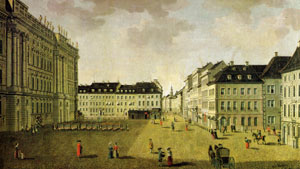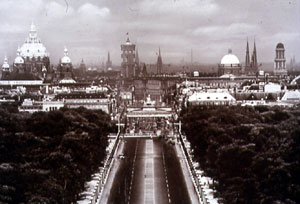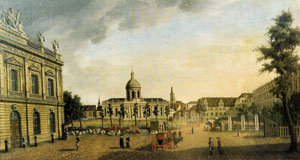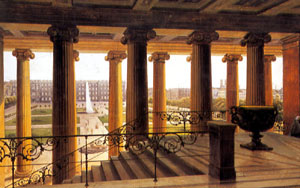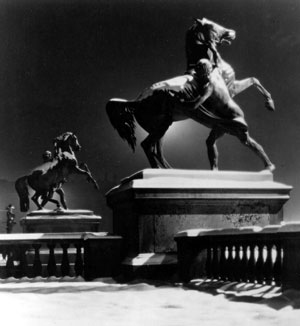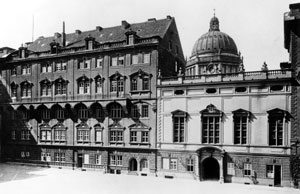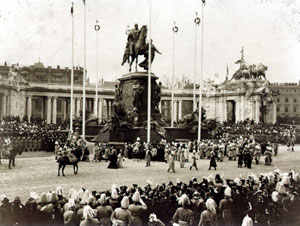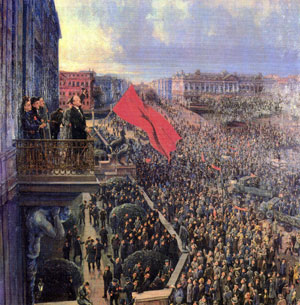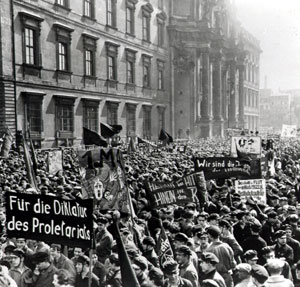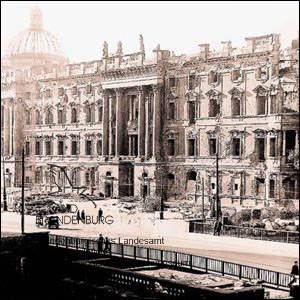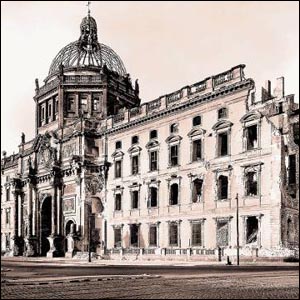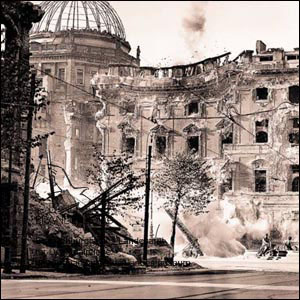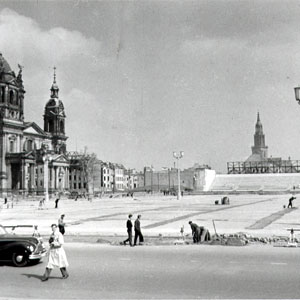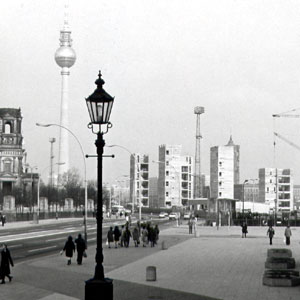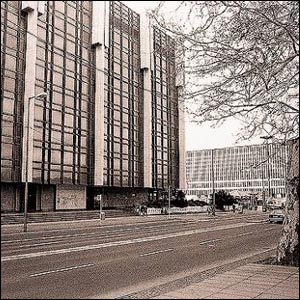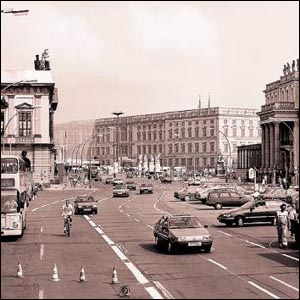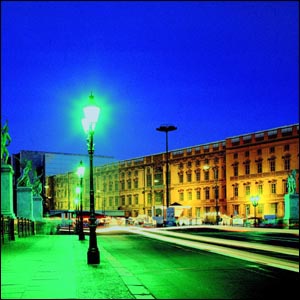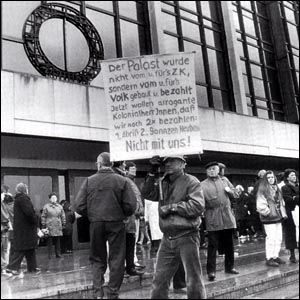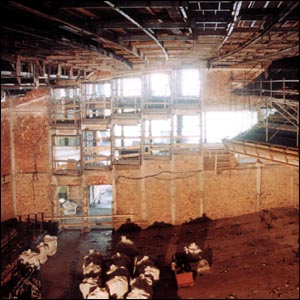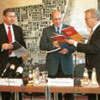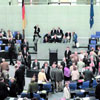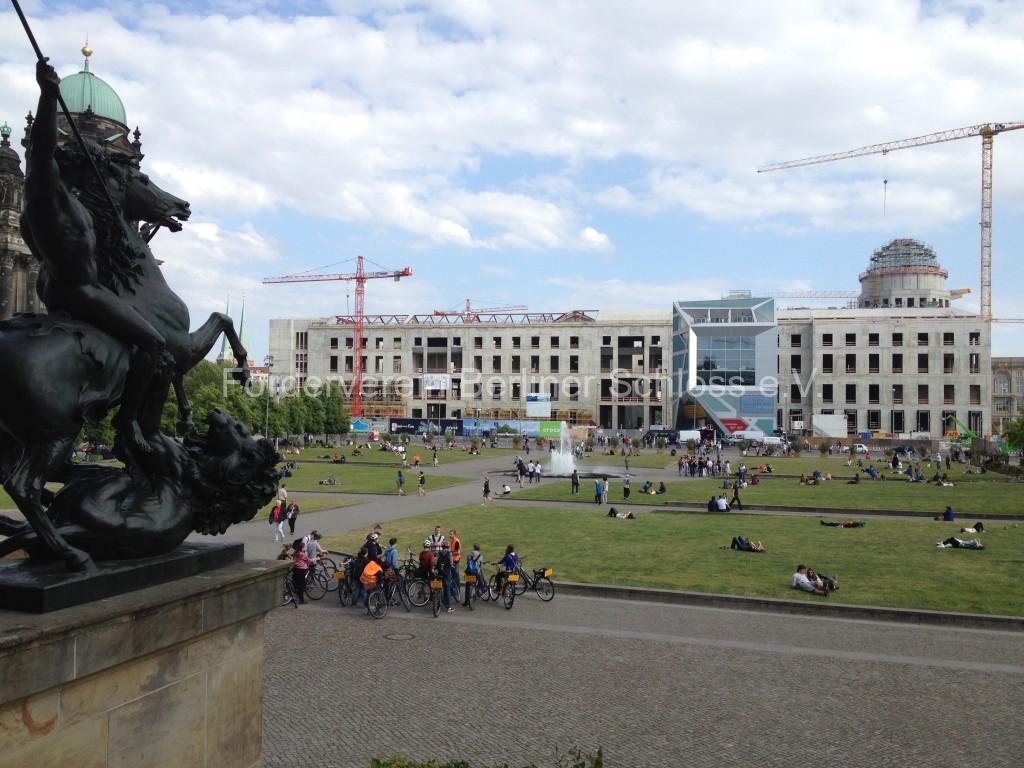Short Architectural History
The Royal Palce of Berlin was founded in 1443 as the residence of the Hohenzollern-Dynasty. This dynasty was elected by the Emperor of th Holy Roman Empire of German Nation as principals of the province of the Mark Brandenburg situated between the rivers Elbe and Oder. The Palace was in the first 200 years a fortress (“Zwing Cölln”) and later a palace in the style of the renaissance, situated at Berlin- Cölln in an edge-corner of the city, close to the bridge across the river Spree, controlling the main merchants-way from France to Poland. The twin-city Berlin and Cölln at first small cities of the Hanse, just “sleeping” small cities. But they got very soon a higher reputation by the political activities of the Hohenzollern’s.
Under the Great Elector Friedrich Wilhelm I. (1640-88) und the elector Friedrich III., who became in 1701 coronated King Friedrich I. in Prussia (1688-1713), the palace became the center of Berlin, as both founded new quarters of the city west to the Palace, the Friedrichstadt on Friedrichswerder and Dorotheenstadt, so called after the epouse of Friedrich I, Sophie Dorothea.
As follows, we would like to inform you about the history of the Palace of Berlin up to now.
 Deutsch
Deutsch English
English Francais
Francais




